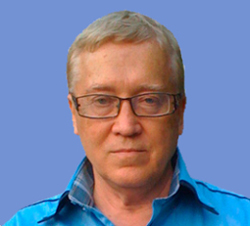
Peter P. Garyaev born in Perm, where he graduated from high school. Entered the Perm State University at the Faculty of Biology. In his 3rd year, he was asked to move to a similar faculty at Moscow State University. (MSU) the Department of molecular biology. After graduating from Moscow State University, Pyotr Petrovich was left in graduate school, and after 3 years he defended his thesis, dedicated to the study of the structure and physicochemistry of one of the complex proteins.
Since 1984, Peter P. Garyaev began research in the field of new directions in genetic coding, which served as the basis for the creation in 1994 of a new direction in genetics. This direction is called Wave Genetics, and then Lingvistiko-wave Genetics.
In 1997, Peter Petrovich defended his doctoral thesis through the Higher International Attestation Commission (HIAC) on the topic "Genome as an operator of the sign physical fields of the biosystem", at the Moscow State Technical University (МГТУ им. Bauman). Over the next few years, Garyaev P. P. became an academician of the Russian Academy of Natural Sciences (RANS), Russian Academy of Medical and Technical Sciences (RAMTN) and a member of the New York Academy of Sciences.
In 2013, at the initiative of P. P. Garyaev was established by LLC "Institute of Quantum Genetics", director and supervisor of which, Naturally, was Peter Petrovich himself.
Peter P. Garyaev was a nominee for the 2021 Nobel Prize in Medicine. However, premature withdrawal prevented this from happening..
 Loading…
Loading…
History of Linguistic-Wave Genetics, as branches from the basic trunk of biology and classical genetics
Working at the Institute of Physical and Technical Problems of the USSR Academy of Sciences as a senior researcher and group leader (1984 – 1998.), Peter P. Garyaev found two, previously unknown, unusual kinds of memory of DNA molecules, which was recorded by correlation laser spectroscopy.
The first type is the nonlinear dynamics of DNA preparations with returns of primary excitation modes.. The explanation for this phenomenon can be found in the physics of nonlinear processes., this is the return of Fermi Pasta Ulam (FPU return). The genetic apparatus uses this phenomenon for an address request to its own chromosomes to call the necessary holographic programs.. Such requests are implemented in biological systems in the processes of regeneration of organs and tissues, when you need to "recall", "return" information, for example, on the structure of the regenerated human liver, the crab claws, tail of a lizard, and so on. Then there are, data "returns", as studies have shown, not only biomacromolecules (DNA, RNA, ribosomes, proteins, collagen, etc.), but they also work at higher levels of the organization.
The second type of memory is the phantom effect., memory of the environment for dynamic wave sign functions of DNA molecules. The environment can be both a space of living cells and tissues., and the space of the cuvette compartment of the spectrometer. Probably, this phenomenon is used by organisms for one of the species long-range transmission of quantum signaling states of DNA molecules in the form of phantoms. In practice, this can be realized in the artificial creation of quantum natural matrices, inherent in the body; DNA fragments, filling and replacing fallen DNA fragments in a variety of genetic injuries in humans.
Another significant section of the work done is the adjustment of the existing triplet (triatomic) models of protein coding by the genetic apparatus of organisms. The essence of these amendments is, which substantiates the system of contextual orientations of ribosomes on information ribonucleic acid (RNA) in the process of protein biosynthesis. This means, that introduces a strong proposition about the real (not metaphorical) gene textuality and quasi-consciousness-thinking of the genome as a quantum biocomputer. The, Used the concept of fractality in relation to the levels of consciousness-thinking in biosystems. And the last key point is the use of the Boma-Berkovich Model of the Universe for the practical application of these technologies..
These sections of scientific research served as a basis for revising and supplementing the already known functions of DNA in the process of genetic coding.. Was created theory of the linguistic-wave genome and published dozens of scientific articles in co-authorship with major physicists and foreign researchers. Four monographs published (author Peter P. Garyaev). Patents and Priorities Obtained. The main practical result of scientific research is the development of fundamentally new approaches to understanding human health and the possibility of prolonging the active life of a person. The key point of the developed technologies is the possibility of quantum programming of stem cells within the framework of natural programs, used by the body itself.